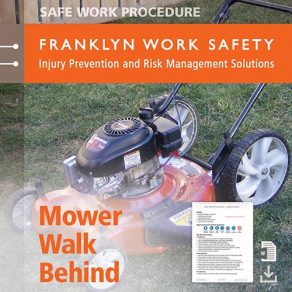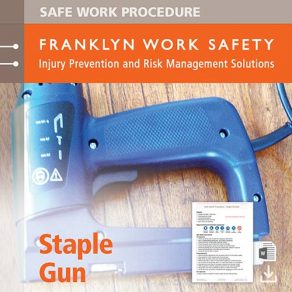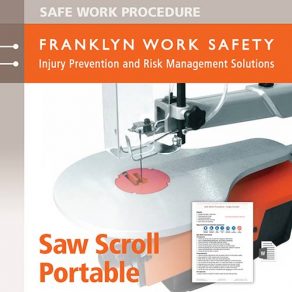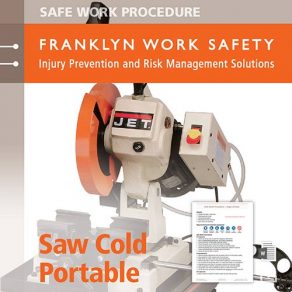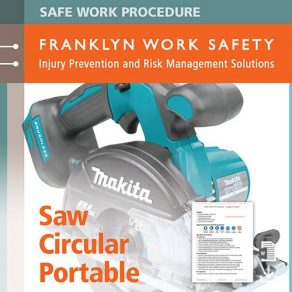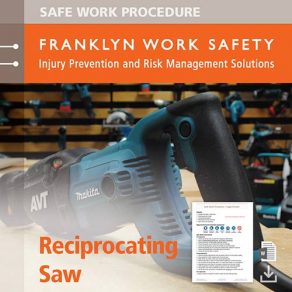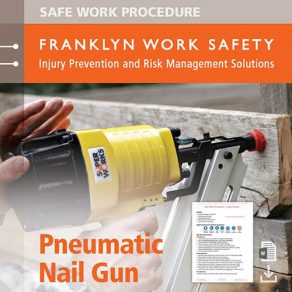There has been a large amount of research recently regarding the negative health effects of sustained sitting. In workplaces, the debate often tends to generate into a discussion regarding the benefits of standing over sitting whilst at work. Whilst Franklyn Work Safety recognises that this is a discussion with merit, neither sustained sitting (standard workstations) or sustained standing (ie. stand up workstations) should be considered the preferred goal for most people.
There has been substantial research on sustained sitting, and standing, and significant downsides have been found for both:
Sustained Sitting
- increased risk of back related problems
- increased risk of heart disease
- increased risk of obesity
- increased risk of Type 2 Diabetes
Sustained Standing
- increased risk of back related problems
- increased risk of musculoskeletal pain of the legs and feet
- increased risk of pregnancy complications
- increased risk of varicose veins
To summarize the literature, neither sustained standing nor sitting is recommended. Each position has its advantages and disadvantages. Overwhelmingly, the research focusses less on postures, but rather avoiding being sedentary. As such, in line with the overwhelming weight of evidence to date, the goal for workplaces should be as much posture change and physical activity for employees as can be facilitated. Whether that be through using workstations that adjust easily between sitting and standing heights, or work practices that have people frequently away from their workstation.
The list below contains journal articles and reputable publications relating to the impacts of sedentary v physically active behaviours; sustained sitting and sustained standing.
Publications Related to: Impacts of Sedentary v Physically Active Behaviours
Australian Institute of Health and Welfare. The Active Australia Survey: A Guide and Manual for Implementation, Analysis and Reporting. Canberra: AIHW; 2003 Link to Guide
Brown WJ, Bauman AE, Owen N. Stand up, sit down, keep moving: turning circles in physical activity research? Br J Sports Med. 2009;43(2):86-88
PubMed | Link to Article
Dunstan DW, Barr ELM, Healy GN, et al. Television viewing time and mortality: the Australian Diabetes, Obesity and Lifestyle Study (AusDiab). Circulation. 2010;121(3):384-391
PubMed | Link to Article
Grøntved A, Hu FB. Television viewing and risk of type 2 diabetes, cardiovascular disease, and all-cause mortality: a meta-analysis. JAMA. 2011;305(23):2448-2455
PubMed | Link to Article
Hamilton MT, Healy GN, Dunstan DW, Zderic TW, Owen N. Too little exercise and too much sitting: inactivity physiology and the need for new recommendations on sedentary behavior. Curr Cardiovasc Risk Rep. 2008;2(4):292-298 Link to Article
Inoue M, Iso H, Yamamoto S, et al; Japan Public Health Center–Based Prospective Study Group. Daily total physical activity level and premature death in men and women: results from a large-scale population-based cohort study in Japan (JPHC study). Ann Epidemiol. 2008;18(7):522-530
PubMed | Link to Article
Pate RR, O’Neill JR, Lobelo F. The evolving definition of “sedentary.” Exerc Sport Sci Rev. 2008;36(4):173-178
PubMed | Link to Article
Proper KI, Singh AS, van Mechelen W, Chinapaw MJM. Sedentary behaviors and health outcomes among adults: a systematic review of prospective studies. Am J Prev Med. 2011;40(2):174-182
PubMed | Link to Article
Stamatakis E, Hamer M, Dunstan DW. Screen-based entertainment time, all-cause mortality, and cardiovascular events: population-based study with ongoing mortality and hospital events follow-up. J Am Coll Cardiol. 2011;57(3):292-299
PubMed | Link to Article
Tremblay MS, Colley RC, Saunders TJ, Healy GN, Owen N. Physiological and health implications of a sedentary lifestyle. Appl Physiol Nutr Metab. 2010;35(6):725-740
PubMed | Link to Article
Warren TY, Barry V, Hooker SP, Sui X, Church TS, Blair SN. Sedentary behaviors increase risk of cardiovascular disease mortality in men. Med Sci Sports Exerc. 2010;42(5):879-885
PubMed | Link to Article
Wijndaele K, Brage S, Besson H, et al. Television viewing time independently predicts all-cause and cardiovascular mortality: the EPIC Norfolk study. Int J Epidemiol. 2011;40(1):150-159
PubMed | Link to Article
World Health Organization. Global Recommendations on Physical Activity for Health. Geneva, Switzerland: WHO Press; 2010 Link to Recommendations
Journal Publications Related to: Impacts of sustained sitting
Chau JY, der Ploeg HP, van Uffelen JG, et al. Are workplace interventions to reduce sitting effective? a systematic review. Prev Med. 2010;51(5):352-356
PubMed | Link to Article
Hamilton MT, Hamilton DG, Zderic TW. Role of low energy expenditure and sitting in obesity, metabolic syndrome, type 2 diabetes, and cardiovascular disease. Diabetes. 2007;56(11):2655-2667
PubMed | Link to Article
Katzmarzyk PT, Church TS, Craig CL, Bouchard C. Sitting time and mortality from all causes, cardiovascular disease, and cancer. Med Sci Sports Exerc. 2009;41(5):998-1005
PubMed | Link to Article
Owen N, Bauman A, Brown W. Too much sitting: a novel and important predictor of chronic disease risk? Br J Sports Med. 2009;43(2):81-83
PubMed | Link to Article
Patel AV, Bernstein L, Deka A, et al. Leisure time spent sitting in relation to total mortality in a prospective cohort of US adults. Am J Epidemiol. 2010;172(4):419-429
PubMed | Link to Article
van Uffelen JGZ, Wong J, Chau JY, et al. Occupational sitting and health risks: a systematic review. Am J Prev Med. 2010;39(4):379-388
PubMed | Link to Article
Journal Publications Related to: Impacts of sustained standing
Ebben JM. Improved Ergonomics for Standing Work. Occupational Health and Safety. Apr 01, 2003 Link to Article
Tüchsen F, Krause N, Hannerz H, Burr H, Kristensen TS. Standing at work and varicose veins. Scand J Work Environ Health. 2003;29(4):270-279 Link to Article
Bahk JW, Kim H, Jung-Choi K, Jung MC, Lee I. Relationship between prolonged standing and symptoms of varicose veins and nocturnal leg cramps among women and men. Ergonomics. 2012;55(2):133-9. Link to Article
McCulloch J. Health risks associated with prolonged standing. Work: A Journal of Prevention, Assessment and Rehabilitation. Volume 19, Number 2/2002. Link to Article

